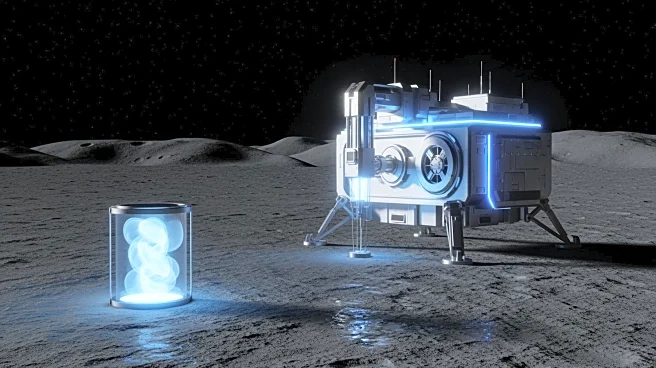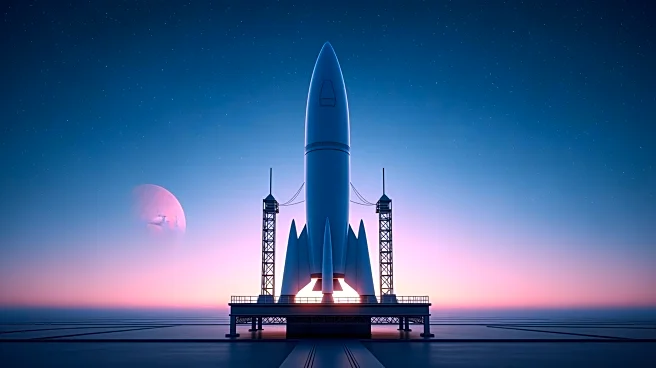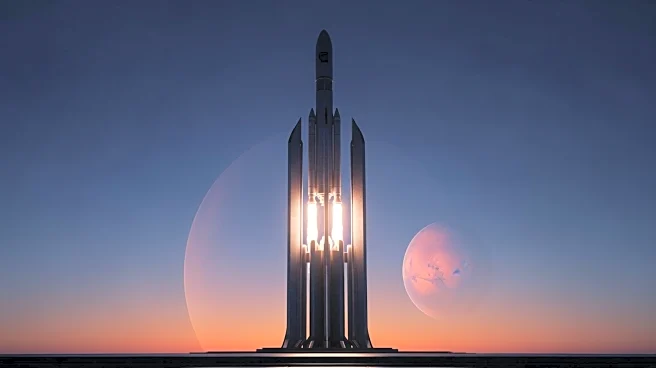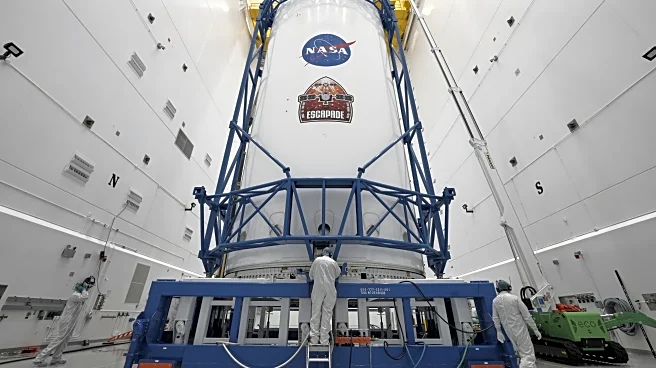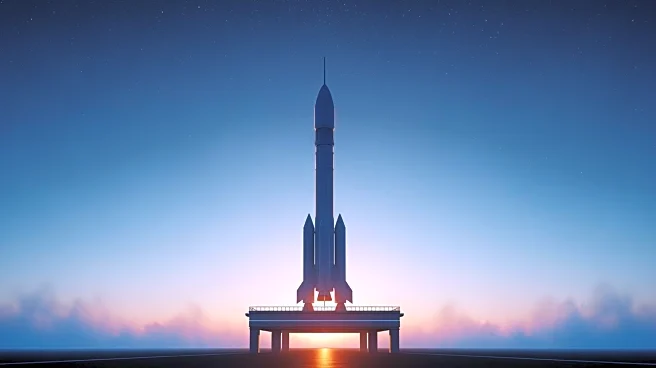What's Happening?
Seattle-based startup Interlune is advancing its efforts to extract Helium-3 from the lunar surface, a resource valued at $20 million per kilogram. Helium-3 is considered highly valuable due to its potential
applications in fusion power plants, cooling quantum computers, and national security uses. The company has developed a prototype excavator, with assistance from Vermeer, to harvest this material from the moon. The Artemis Program by NASA is facilitating infrastructure development for lunar exploration, providing opportunities for companies like Interlune to implement their technologies. Helium-3 is scarce on Earth, primarily produced through the decay of tritium, a costly and limited resource. Interlune plans to start deliveries of Helium-3 by 2029, with purchase agreements already in place with companies requiring it for advanced cooling systems.
Why It's Important?
The extraction of Helium-3 from the moon could revolutionize energy production and technological advancements. Fusion power plants utilizing Helium-3 could offer a cleaner and more efficient energy source, potentially reducing reliance on fossil fuels and impacting global energy markets. Quantum computing, which requires extreme cooling, could benefit from Helium-3, accelerating advancements in computing power and capabilities. The scarcity of Helium-3 on Earth makes lunar extraction crucial, positioning Interlune and similar companies at the forefront of a new space economy. This development could lead to significant economic opportunities and technological breakthroughs, influencing industries ranging from energy to national security.
What's Next?
Interlune plans to commence Helium-3 deliveries in 2029, with ongoing testing of its prototype excavator on Earth. As NASA's Artemis Program progresses, more companies may join the lunar economy, developing technologies for resource extraction and utilization. The success of these initiatives could prompt further investment in space exploration and resource harvesting, potentially leading to international collaborations or competition. Stakeholders in energy, technology, and national security sectors will likely monitor these developments closely, assessing the implications for their industries and strategic interests.
Beyond the Headlines
The pursuit of Helium-3 extraction raises ethical and legal questions about resource ownership and environmental impact on the moon. As companies and nations vie for lunar resources, international regulations and agreements may need to be established to ensure fair and sustainable practices. The cultural significance of lunar exploration could also shift, as the moon becomes a site of economic activity rather than purely scientific exploration. Long-term, this could alter humanity's relationship with space, fostering a new era of space-based economies and geopolitical dynamics.
